“Equal in the Eyes of God”
Leer en español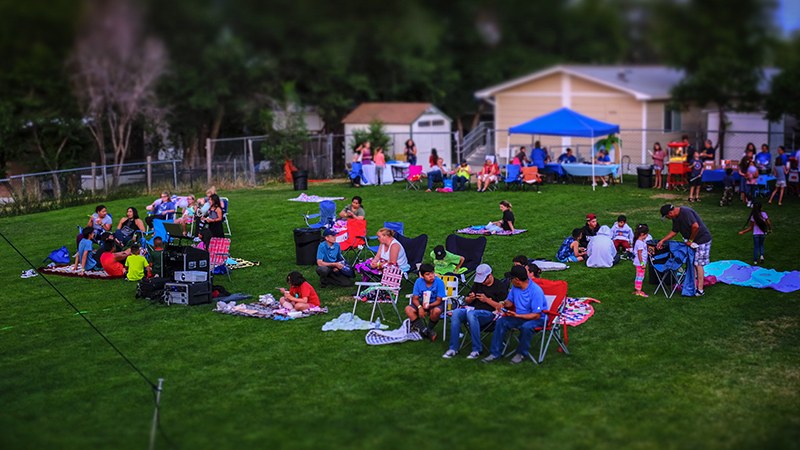
Neighbors in Lago Vista Mobile Home Park gather for an outdoor movie night on July 21, 2018. Photos by Joe Mahoney
By Kristin Jones
People still complain about inadequate sidewalks and street lights.
That’s the bad news in Lago Vista Mobile Home Park, a community outside of Loveland that has been working together to improve the quality of life inside the park. For a long time, some people have avoided going out at night here because it feels unsafe; that’s still true.
But in the three years since neighbors began meeting regularly to address what they see as the biggest challenges to good health and collective prosperity here, many other things have shifted.
“We can see a ‘before’ and ‘after’ in Lago Vista,” said Sonia Ledezma, a young wife and mother and immigrant from Mexico who is part of the team.
The community is among several in the state that are partnering with The Colorado Trust to advance their own visions of health equity. After years of building relationships and planning, several Colorado towns and neighborhoods have received funding via the Community Partnerships process to pursue detailed plans that they hope will address some of the deeper inequities that get in the way of long, healthy lives.
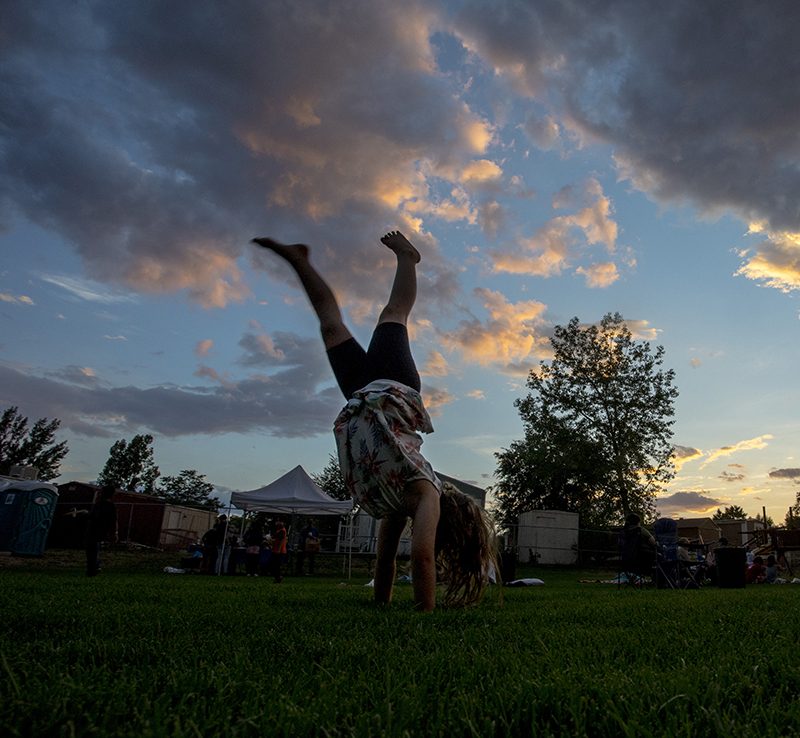
Many healthy activities require the right environment. July 21, 2018.
Lago Vista, like the others, is unique. It’s a neighborhood of more than 1,000 people living in about 300 trailers at the edge of Loveland. It’s surrounded by the city on most sides, but it isn’t part of it; the park itself is the private property of an out-of-state landlord.
Heide Philpot has lived here for 19 years. She raised her two kids here, and she showed up to the first Community Partnerships meeting because of them.
“There was a stigma because they lived in a trailer park,” she said.
For some in the community, identifying the problems with living in Lago Vista came easily. People described feeling upset at having to move here. The sense of physical insecurity was part of it; some people were worried about their kids walking to school. There was also a feeling of social isolation; some complained that they didn’t know their neighbors, or that people weren’t friendly. Some felt that they were discriminated against, were concerned that their kids were being bullied, or felt disappointed in the school system or the lack of community and parent involvement.
Part of the work was identifying the assets that the community already had. Lago Vista provides a pocket of affordable housing in an increasingly expensive city and state. The mobile home park has a clubhouse with a pool, and shared spaces that host programs like tutoring for kids. The management of the park had been a source of anxiety in years past, but the current management is largely seen as supportive.
And slowly, too, by the mere fact of getting together, things started to change for the better. The resident team organized events like this year’s Spring Festival, which attracted around 200 people—or about a fifth of the population of the neighborhood.
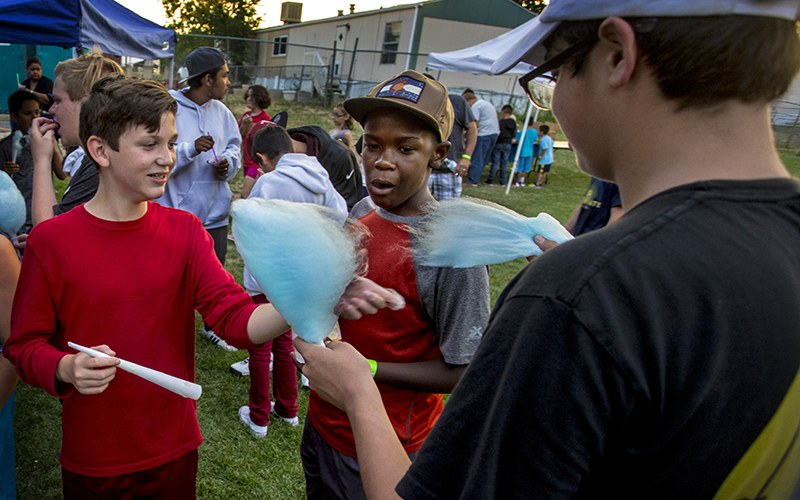
Cotton candy is always a hit. July 21, 2018.
Parents began getting together with each other to address bullying directly when it happened, and saw immediate improvements. The community began advocating for themselves with the school district—convincing officials to add bus stops in the park rather than on its edge, for instance.
For some, the Community Partnerships resident team itself began to be a life-altering form of support. It didn’t come easily at first. The language barrier for the English-speaking and Spanish-speaking residents was profound; for a while, everything was translated, and the meetings took twice as long. But the team found a solution in technology that allows a single interpreter to provide simultaneous translation through headsets.
At a celebration the resident team held in late June, again and again people spoke of their gratitude for the bonds they’d formed here, the stories they’d shared.
“Some of my Hispanic friends and I have experienced racism and discrimination, and I’m grateful that you have accepted us, and treated us as family,” Ledezma said to the others.
Ledezma later said she had been harassed with her preschool-age daughter and a friend at a nearby Olive Garden about a year ago. A group of white people sitting nearby had repeatedly taunted them with ethnic slurs, calling them “monkeys” and mocking the preschooler. A server intervened, and the harassers left, but were waiting for the Hispanic family when they went outside. Ledezma believes that had the server not accompanied them to the car, they would have been physically attacked.
The strength of the neighborhood group doesn’t give full protection from the threat of violence and racism, but it offers support. “They cry with us,” Ledezma says.
Digging into the root causes of the problems facing the neighborhood has taken real work. Rose Rager, a grandmother who joked that she represented “the more mature residents” of the park, said a turning point for her came at a four-hour training on oppression.
Rager said she was reluctant to go; she had better things to do with her time on a Saturday. Or so she thought: “I learned that I really didn’t have anything better to do with my time.”
The session opened Rager’s eyes to the ways in which her experiences as a white person—even living in the same mobile home park as her Latino neighbors, and even as a grandmother to Asian-American and Black grandchildren—might give her invisible advantages.
“When I get pulled over by the police, I get nervous and think, ‘Oh no, this could cost me some money.’ I don’t think, ‘This could cost me my life,’” said Rager.
Classism and racism lie at the heart of many of the common problems in the park, the team found.
The first year of their health equity implementation plan is geared directly toward those in the park who are most affected by these problems—especially youth, Spanish-speaking residents, families of color, and people living at or below 130 percent of the federal poverty level.
But the plan benefits everyone. Their goals include creating a parent advisory board to the school board, establishing a more formalized social network within the park—including a bilingual phone tree, child care and CPR training for residents—and working with park management to include resident input in the park’s internal rules and agreements.
They’re also developing a long-term plan for addressing those infrastructure problems. Because the park is private, funding from The Trust can’t be used to build sidewalks or install lighting here, and it’s not the county’s responsibility. There are also concerns among residents that such improvements could lead to higher rents for the plots of land here. So the residents are spending the next year learning how other mobile home parks have addressed similar challenges.
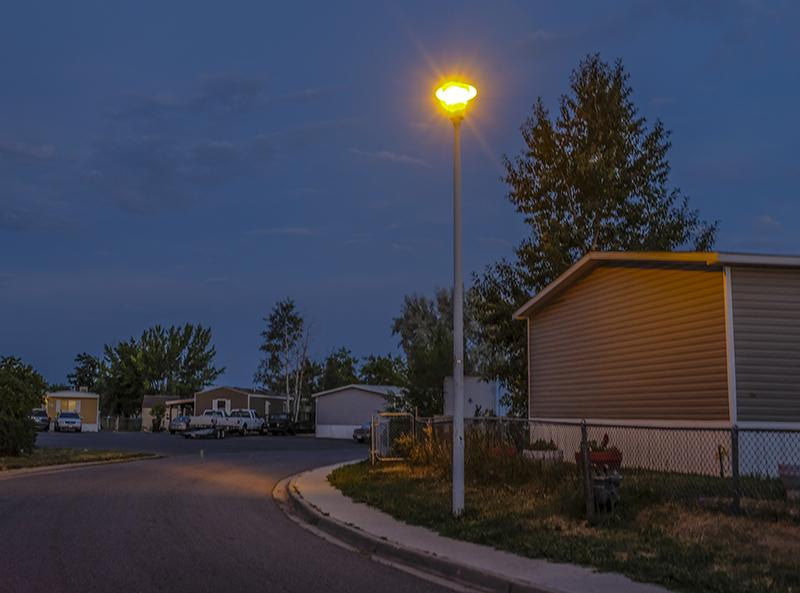
Some people worry the streets aren’t safe to walk on at night. July 21, 2018.
They also have a pot of money they can draw from to contribute to nonprofits and agencies that work here—both to support the work that’s being done and to ask that things be done differently. They’re hopeful that this can shift things, too.
As Rager put it: “Money talks.”
Just as importantly, so do the neighbors. For three Mondays a month for years, they’ve kept up the conversations that are crucial to the future of the neighborhood.
In all this time, says Philpot, “I’ve never thought about quitting.” It always felt too important.
Valente Mireles, an immigrant from Mexico who moved here four years ago, said that the change for him and other Hispanic members of the group has been profound.
“We think that we don’t have a voice, but we do,” Mireles said. Doors started opening when the team began communicating with each other.
“Now there’s family here. There’s love here. We are all equal in the eyes of God.”
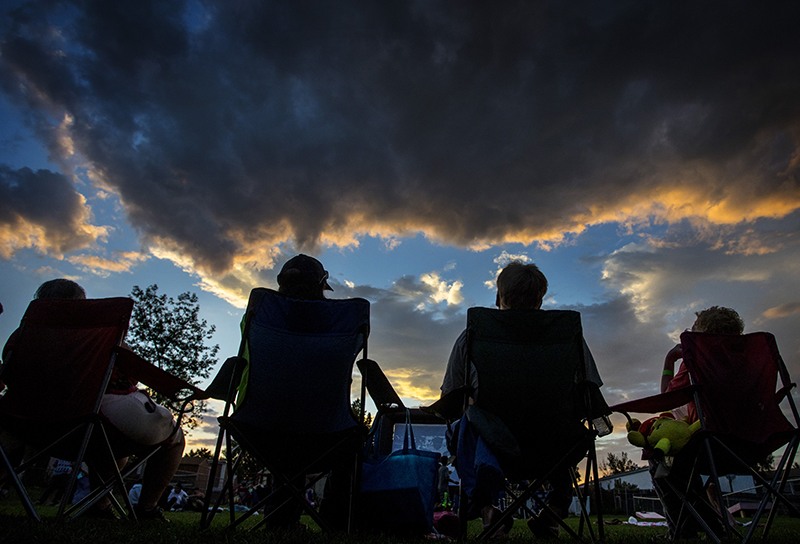
Waiting for the movie to start. July 21, 2018.

